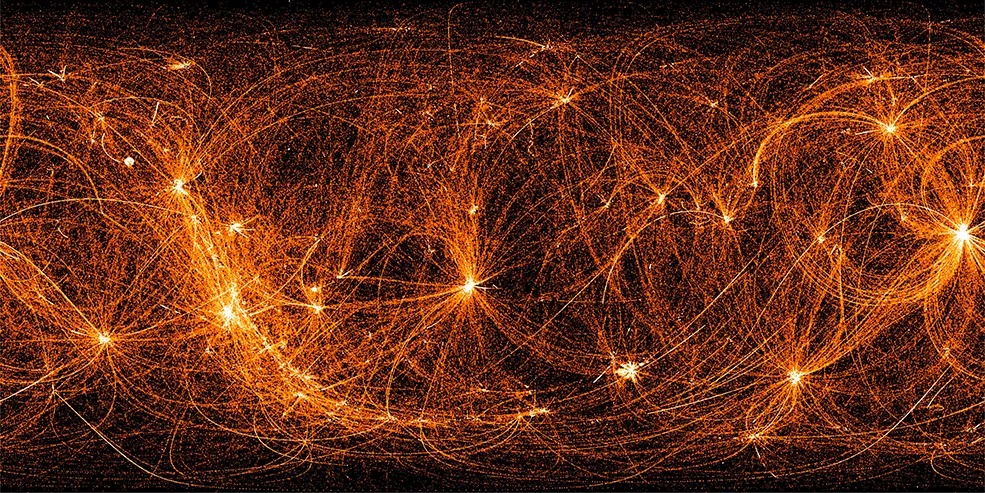
 Credit: NASA/NICER
Credit: NASA/NICER
NICER: Watching in the Night
Since 2017, the Neutron star Interior Composition ExploreR, or NICER as it's more commonly known, has been studying X-ray emission from extreme cosmic objects from its berth at Site 7 of the the International Space Station's Express Logistics Carrier-2. The NICER facility consists of 56 individual X-ray reflectors which concentrate X-rays from a small patch of the sky onto individual X-ray detectors. These detectors can measure the time of arrival of individual X-rays to very high precision, along with measuring the energy of each X-ray, of about 10 million X-rays per second. NICER's primary science goal is to obtain precise
measurements of the regular pulses of X-ray emission produced by some rapidly
spinning neutron stars (also known as X-ray
pulsars). In addition to studying neutron stars,
NICER also studies X-ray emission from black holes, stars, galaxies, and other denizens of the cosmos, and can
rapidly move from target to target if a new object flares up in X-rays. NICER
even detects X-rays when the telescope is moving from one target to another.
The image above shows the X-rays detected by NICER over 22 months of observations of the sky, as the instrument slews from one target to
another. Each track represents the cosmic X-ray emission seen by the NICER as NICER moves its pointing direction from one place the sky to another. Bright spots where multiple tracks converge are particularly interesting targets: important X-ray pulsars, black holes, stars and supernova remnants. Operating in space can be dangerous, though, and on May 22, 2023, a tiny piece of space debris hit the optical blocking filter on one of the X-ray reflectors. This caused a hole in the blocking filter and increased the amount of optical light contamination when the ISS is on the daytime side of earth. This has restricted NICER to observing most targets during nighttime, or when they are suitably far from the Sun. However, NASA has plans in development to patch this hole. Hopefully, NICER will return to normal operations by the end of the year.
Published: February 19, 2024
<
HEA Dictionary ● Archive
● Search HEAPOW
● Other Languages
● HEAPOW on Facebook
● Download all Images
● Education ● HEAD
>

Each week the HEASARC
brings you new, exciting and beautiful images from X-ray and Gamma ray
astronomy. Check back each week and be sure to check out the HEAPOW archive!
Page Author: Dr. Michael F. Corcoran
Last modified Tuesday, 27-Feb-2024 10:13:29 EST


